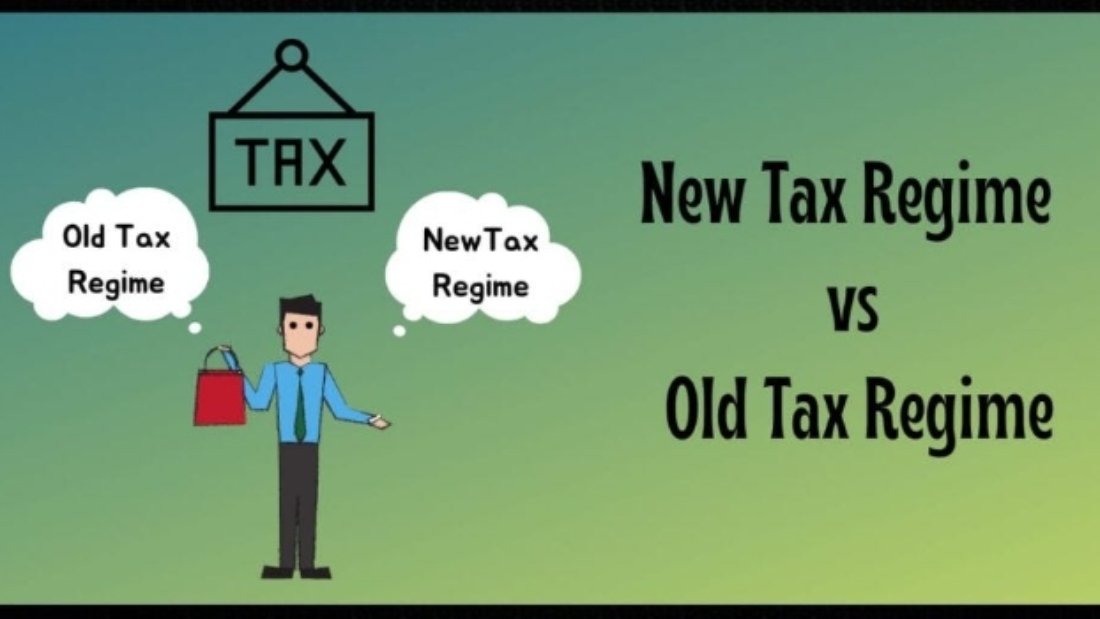Choosing between the new and old tax regimes in India is crucial for taxpayers. The regimes offer distinct tax slabs, deductions, and exemptions. Understanding these differences empowers you to make an informed decision that minimizes your tax liability.
The traditional old regime allows claiming various deductions but has higher tax rates. The new regime offers lower tax rates but with minimal deductions.
A comparative analysis of your income, deductions, and financial plans is vital for selecting the regime that best suits your situation. Consulting a tax advisor can provide personalized guidance for an optimal choice.
Understanding the Old Tax Regime (OTR)
The old way of filing taxes in India is like having a secret weapon against high tax bills. It lets you claim deductions for everyday expenses, like rent you pay or medical bills you rack up. Think of it like getting cash back on these expenses, but instead of cash, you reduce the amount of tax you owe! These deductions can really add up, especially if you’re a homeowner or someone with high medical costs. The end result? A much smaller tax bill comes filing season.
Key features of the OTR:
- Huge exemptions and deductions: The prior tax code was like finding a treasure trove of tax advantages! Numerous expenses, like as rent, medical bills, and retirement contributions, are deductible, which can drastically lower your taxable income.
- Different tax slabs: Consider it analogous to income tiers on a freeway. You pay more in taxes (toll) and enter a higher tax bracket (toll booth) the more you earn (the faster your car goes).
- Adaptability and personalization: The former tax structure is adaptable! Selecting the appropriate deductions is similar to selecting tools from a toolbox. In this approach, after deducting your expenses, you only pay taxes on the remaining amount.
Who should consider the OTR?
- Taxpayers with large deductions: The OTR can drastically cut your taxable income and result in a lesser tax outlay if the total of your deductions under multiple sections, such as 80C, 80D, HRA, etc., reach a particular threshold.
- People in difficult financial situations: The OTR offers greater flexibility to people in complex financial arrangements, such as repaid home loans, various investments, or medical costs.
- Those averse to change: If you’re comfortable with the existing tax filing system and understand how to maximize deductions, sticking with the OTR might be a simpler option.
Unveiling the New Tax Regime (NTR)
Introduced in the 2020 Union Budget, the NTR offers a simplified tax structure with lower tax rates. Unlike the OTR, the NTR comes with minimal deductions and exemptions.
Key features of the NTR:
- Simplified tax slabs: In comparison to the OTR, the NTR has fewer tax brackets and lower tax rates. Those who fall into the lower and middle-income tax bands may find this especially tempting.
- Standard deduction: The NTR provides a standard deduction of Rs. 50,000, eliminating the need to calculate and claim various deductions under different sections.
- Reduced tax filing complexity: The NTR streamlines the tax filing process by removing the need to gather and submit documents for multiple deductions.
Who should consider the NTR?
- Taxpayers with limited deductions: If your total deductions under the OTR are likely to be lower than the standard deduction of Rs. 50,000 offered in the NTR, opting for the new regime can be beneficial.
- People with simple finances: People without a lot of investments, debt from medical expenses, or house loan payments are most suited for the NTR’s simplest structure.
- For those looking for an easy experience: The streamlined filing process and less paperwork associated with the NTR might be a big plus for people who prioritize ease.
The Crucial Choice: A Comparative Analysis
Choosing between the OTR and NTR hinges on a careful evaluation of your individual financial circumstances. Here’s a breakdown of some key factors to consider:
- Total income: Generally, for lower income brackets (up to Rs. 5-7 lakhs), the tax liability in both regimes is likely to be similar. However, for higher-income earners, the NTR’s lower tax rates might become more attractive.
- Deduction potential: If you anticipate claiming deductions exceeding Rs. 1.5-2 lakhs (depending on your income bracket), the OTR might be more advantageous.
- Investment strategy: If you invest heavily in instruments like PPF, ELSS mutual funds, or NPS (National Pension System), the deductions available under Section 80C in the OTR can be significant.
- Medical expenses: For individuals with high medical bills, claiming deductions under Section 80D in the OTR can offer substantial tax benefits.
- Home loan repayment: The OTR allows you to claim deductions for interest paid on home loans, which can be a major advantage for homeowners.
Beyond the numbers:
While the above factors provide a good starting point, consider these additional aspects:
- Future financial plans: Think of it like picking a tax plan for the next few years. The old system is great if you expect big changes, like buying a house (home loan deduction!). But if your life stays steady, the new plan might be simpler.
- Comfort level with tax filing: The OTR requires more effort in terms of gathering documents and calculating deductions. If you’re comfortable with this process, the OTR might not be a deterrent. However, if you value simplicity, the NTR’s streamlined approach might be more appealing.
- Professional guidance: Figuring out taxes can feel like navigating a maze blindfolded. A financial advisor acts like your personal guide, helping you understand your options and choose the path that saves you the most money. They take the stress out of tax season and ensure you’re on the right track for your financial goals.
Making the Final Decision
There is no method to decide between the OTR and NTR in a generic manner. The most effective routine for you will be determined by your unique financial circumstances. Here are some additional guidelines to assist you in making your decision:
- Perform the math: To determine your tax liability under both regimes, use online tax calculators or speak with a tax expert. This will let you see which choice will result in the biggest tax savings.
- Think about the long run: Don’t limit yourself to the immediate tax advantages. Consider potential changes to your investments, income, and deductions in the upcoming years. Select a regimen that is consistent with your long-term financial objectives.
- Keep abreast: Annual changes may occur in the tax environment. Keep yourself updated on any changes to tax slabs, deductions, or exemptions in both regimes so you can make the best choice possible every year.
Disclaimer: All posts in this blog are crafted by human authors, ensuring originality and minimal plagiarism. For more exceptional content, explore our comprehensive writing services.


 Cart is empty
Cart is empty 













































